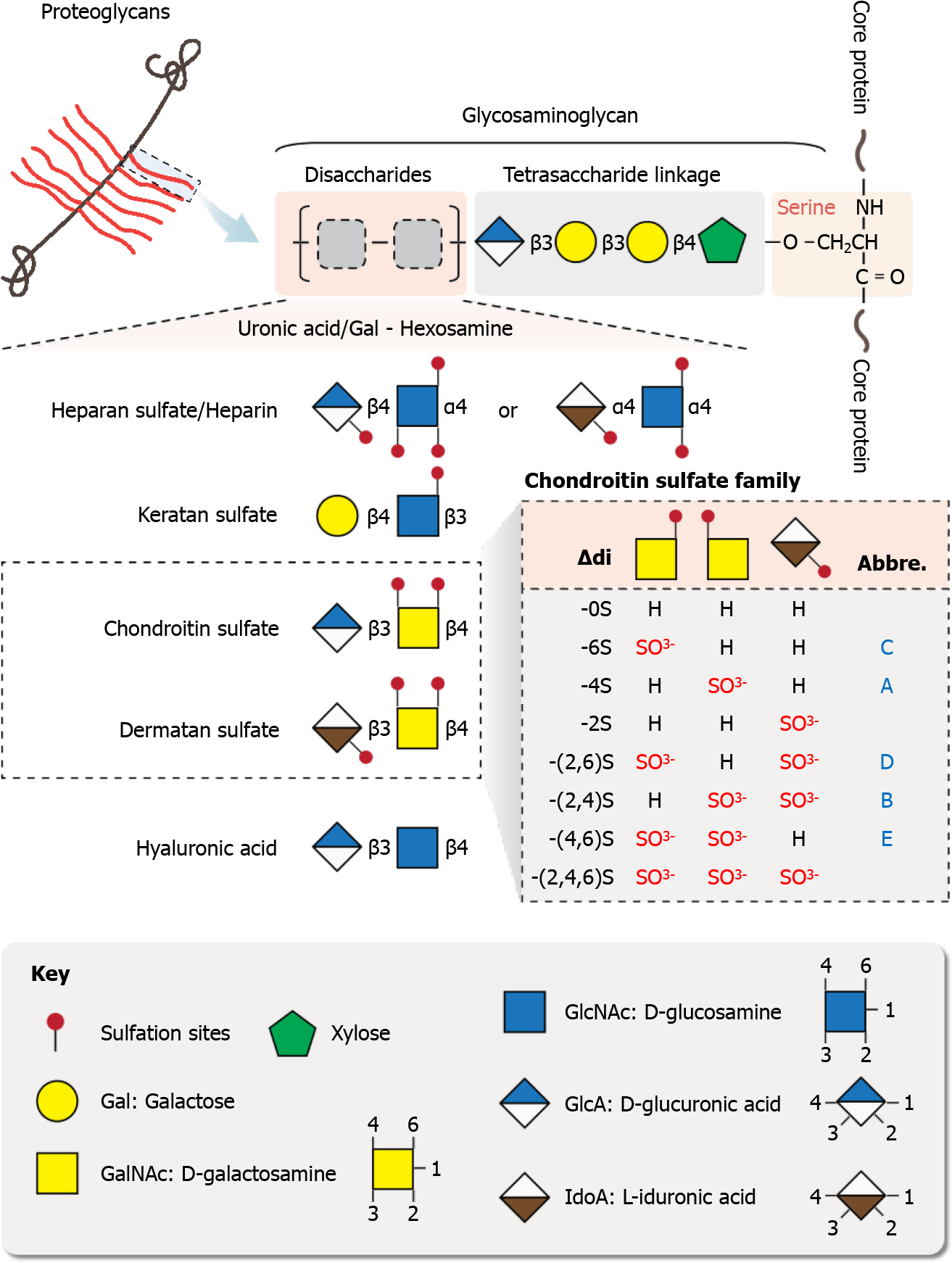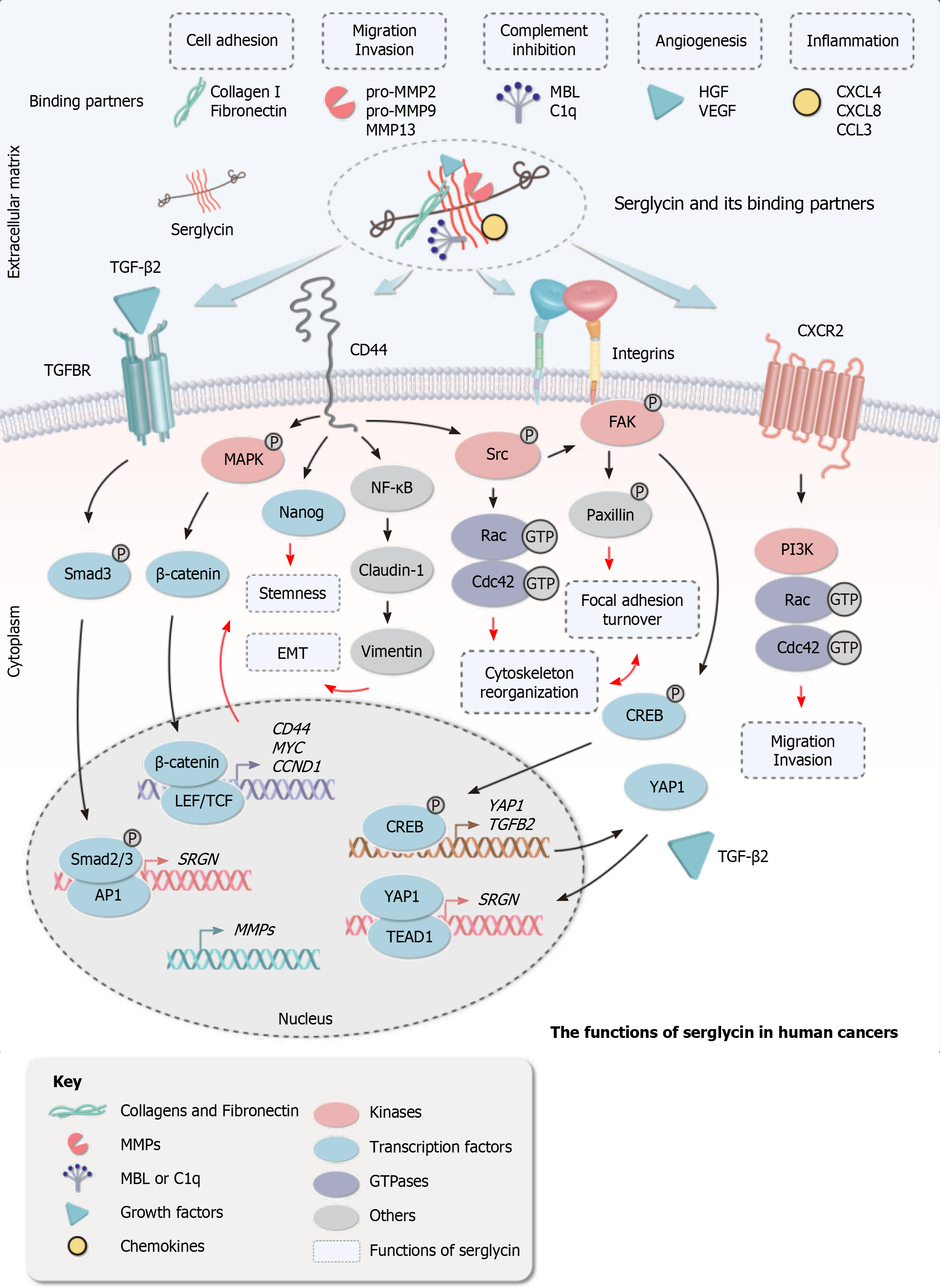Copyright
©The Author(s) 2021.
World J Clin Oncol. Jul 24, 2021; 12(7): 507-521
Published online Jul 24, 2021. doi: 10.5306/wjco.v12.i7.507
Published online Jul 24, 2021. doi: 10.5306/wjco.v12.i7.507
Figure 1 Structure and components of glycosaminoglycan chains of proteoglycans.
The disaccharide unit of glycosaminoglycan consists of epimers of uronic acid (GlcA, IdoA) or galactose and hexosamine (GlcNAc, GalNAc). The repeating disaccharide units in different types of glycosaminoglycan are shown with the potential sulfation positions. The different disaccharides types (∆di) of chondroitin sulfate family have abbreviated names, which are based on their different sulfation positions.
Figure 2 Overview of serglycin functions in human cancers.
The various binding partners of serglycin contribute to the multiple functions of serglycin in human cancers. Serglycin, with or without binding partner, can bind to receptors on cancer cells and activate the downstream signaling pathways, including β-catenin, Nanog, phosphatidylinositol-3-kinase (PI3K) and transforming growth factor (TGF) β pathways. MMP: Matrix metalloproteinase; NF-κβ: Nuclear factor-kappa B.
Figure 3 Classification and schematic representation of proteoglycans studied in esophageal squamous cell carcinoma.
Proteoglycans are classified as extracellular, pericellular, cell-surface, and intracellular according to their cellular and subcellular localization. The ones that have pro-invasive function in esophageal squamous cell carcinoma (ESCC) are highlighted in red bubbles, and the ones that act as the tumor suppressors are highlighted in green bubbles. Lumican is in the transparent bubble because its function in ESCC is still controversial. EMT: Epithelial-mesenchymal transition.
- Citation: Zhu Y, Cheung ALM. Proteoglycans and their functions in esophageal squamous cell carcinoma. World J Clin Oncol 2021; 12(7): 507-521
- URL: https://www.wjgnet.com/2218-4333/full/v12/i7/507.htm
- DOI: https://dx.doi.org/10.5306/wjco.v12.i7.507











